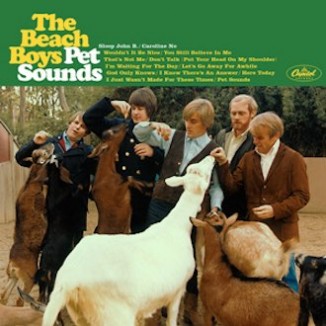56 years ago today, the Phoenix Suns and the Milwaukee Bucks were awarded franchise licenses by the National Basketball Association, creating teams for the two cities and their millions of fans. The Suns are the NBA’s ultimate nearly men, having the second-highest franchise win percentage of any team never to win the championship, while the Bucks also had a contest among fans to choose a name; the Bucks were chosen over the much more popular ‘Robins’. READ some highlights of the two teams’ franchise history… (1968)

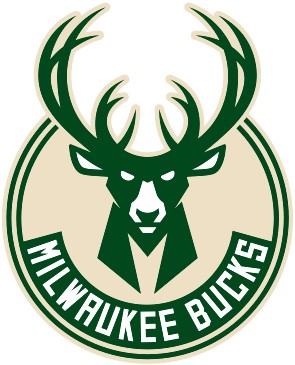
The Milwaukee Bucks are the only team to have ever won a championship in both the eastern and western conferences of the NBA, and have enjoyed several streaks of division dominance in the periods of 1971-1974, 1980-1986, and 2021-2023. Kareem Abdul-Jabaar is the most famous player to wear the Bucks’ jersey, and helped lead the team to the 1971 NBA Championships by sweeping the Baltimore Bullets 4 games to 0.
The Arizona Republic newspaper held a contest for the new Phoenix basketball team name, and ‘Suns’ was preferred over Scorpions, Rattlers, Thunderbirds, Wranglers, Mavericks, Tumbleweeds, Mustangs, and Cougars.
After reaching, and losing, the 1976 NBA Finals, the Suns had to rebuild throughout the 80s until in ’88 they landed Kevin Johnson, who, along with the future Hall of Famer Charles Barkey, launched the Suns into an era of free-scoring dominance that also failed to capture the championship. In 2004, the Suns signed free agent Steve Nash, and throughout the decade challenged routinely for the playoffs. However this era was also to end without silverware.
MORE Good News on this Date:
- Sir Francis Bacon, the father of empiricism and the scientific method, was born in England (1561)
- Leaders of the 6 self-governing colonies of Australia—New South Wales, Victoria, South Australia, Queensland, Western Australia, and Tasmania—met to discuss unifying under a federal government (1899)
- Israel withdrew from the Sinai Peninsula (1957)
- The World’s largest block of cheese, a cheddar, was created for the New York World’s Fair by Steve’s Cheese in Denmark, Wisconsin, using 170,000 quarts of milk, weighing in at 34,591 pounds—more than 15 tons (1964)
- The world’s first ‘jumbo jet’, a Boeing 747, launched its maiden voyage as a PanAm flight from Kennedy Airport to London’s Heathrow, arriving in six and a half hours (1970)
- Apple introduced its Macintosh computer during the Super Bowl, with its now-famous “1984” television commercial (1984)
- Evo Morales became the first indigenous president of Bolivia (2006)
93 years ago today, Clyde McCoy the jazz trumpeter recorded Sugar Blues for Colombia Records. The song was originally written in 1919 by Clarence Williams with words by Lucy Fletcher, but the wah-wah trumpet clams that Clyde applied made it practically his theme song. The single recorded on that day would sell 14 million copies worldwide.
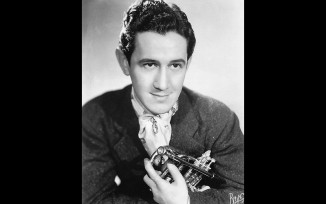
It’s believed that McCoy invented the wah-wah trumpet style by fluttering a Harmon mute in the bell of his trumpet. It was so popular that he licensed the King Instrument Company to manufacture and market the device. The sound inspired dozens of future musicians including, some have suggested, Jimi Hendrix—in particular to record Voodoo Child (Slight Return).
The reason is that in 1967, a similar effect was made for electric guitar with the introduction of the Vox” Clyde McCoy” Wah-Wah Pedal, though Clyde’s name was only used for promotion and he himself had nothing to do with the use or development of the pedal. LISTEN to the song… (1931)
237 years ago today, one of the greatest of the English Romanticist poets, Lord Byron was born in London. The 6th Baron of Byron, he was born into a life of wealth and privilege which never suited him, and in the likeness of some of the best artists in history, spent himself into debt traveling around the world having affairs and writing about them. In some ways, he resembles the first modern celebrity, and his first wife Annabella coined the term “Byromania” to refer to the commotion surrounding him. His seminal works, Childe Harold’s Pilgrimage, and Don Juan, remain not only celebrated expressions of the English language, but also elaborate pegs on which Byron could hang a witty and satirical social commentary.
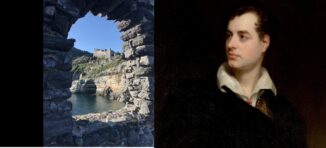
After taking his seat in the House of Lords in 1809, Byron immediately left on a long and debauched walkabout, sailing to Lisbon, before crossing Spain and proceeding by Gibraltar and Malta to Greece, where he and his friend ventured inland to Ioánnina and to Tepelene in Albania. Here he began to compose the first two cantos of Childe Harold’s Pilgrimage.
In Childe Harold’s Pilgrimage, the poet describes the travels and reflections of a young man who, disillusioned with a life of pleasure and revelry, looks for distraction in foreign lands. Besides furnishing a travelogue of Byron’s own wanderings through the Mediterranean, the first two cantos express the melancholy and disillusionment felt by a generation weary of the wars of the post-Revolutionary and Napoleonic eras, including that Man was “half dust, half deity, alike unfit to sink or soar.”
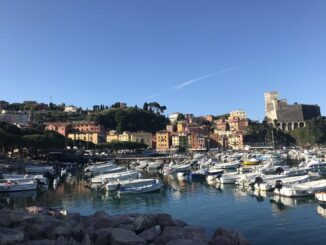
Later in Italy, Byron famously stopped in Venice, had several affairs, and reached Liguria where he stayed at Porto Venere. He lived for a time with Mary Shelley in a small, nearby, beautiful seaside known now as “Poet’s Gulf.” This time the trip led to his revision of the classic story of Don Juan, in which Byron was able to free himself from the excessive melancholy of Childe Harold and reveal other sides of his character and personality—his satiric wit and his unique view of the comic rather than the tragic.
Upon a plaque near Byron’s Cove in Porto Venere, several stanzas of Childe Harold are written in English and Italian. (1788)
“There is a pleasure in the pathless woods,
There is a rapture on the lonely shore,
There is society, where none intrudes,
By the deep Sea, and music in its roar:
I love not Man the less, but Nature more,
From these our interviews, in which I steal
From all I may be, or have been before,
To mingle with the Universe, and feel
What I can ne’er express, yet cannot all conceal.”
And, on this day in 1967, The Monkees performed live for the very first time at The Cow Palace in San Francisco to a sell-out crowd.
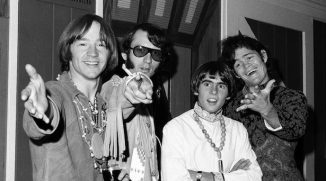 Initially formed for the TV show about an imaginary band, the actor-musicians, soon became a real band with five #1 hit songs. Defying instructions to stay out of the recording studio, The Monkees eventually fought for and earned the right to supervise all musical output under the band’s name.
Initially formed for the TV show about an imaginary band, the actor-musicians, soon became a real band with five #1 hit songs. Defying instructions to stay out of the recording studio, The Monkees eventually fought for and earned the right to supervise all musical output under the band’s name.
56 years ago today, the TV comedy variety show Rowan & Martin’s Laugh-In debuted on NBC. Characterized by psychedelic colors and a rapid-fire series of gags and sketches, many of which were politically charged or conveyed sexual innuendo, it ran for five years with 140 episodes.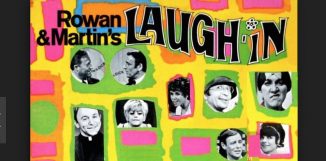
Hosted by comedians Dan Rowan and Dick Martin, it featured, at various times, Goldie Hawn, Arte Johnson, Richard Pryor, Ruth Buzzi, Judy Carne, Jo Anne Worley, Henry Gibson, Lily Tomlin, Richard Dawson, and announcer Gary Owens. WATCH a ‘Best Of’ video… (1968)
58 years ago today, Brian Wilson and The Beach Boys began recording Wouldn’t It Be Nice. The opening track for their forthcoming album, Pet Sounds, it would reach No.8 on the Billboard Hot 100.
The LP, which garnered enormous acclaim worldwide, was the band’s 11th studio album, and was produced, arranged—and mostly written—by Wilson. The song is distinguished for its symphonic ‘Wall of Sound’, arranged using 16 session musicians and a variety of instruments not normally associated with popular music—including accordions and a detuned twelve-string guitar. Wilson also employed classical music devices, such as bitonality and ritardando.
WATCH a video below on the making of the song, with voice recordings from the studio… (1966)
SHARE the Memories, Milestones, and Music…




















